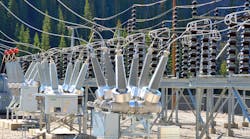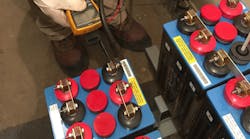The Newton-Evans Research Company has reached the midpoint of its triennial tracking study of change and automation occurring in the world's electric power substations.
As of August 7, more than 50 major U.S. and Canadian utilities have submitted their survey responses to Newton-Evans staff. A summary of some key interim findings in this 30-part survey process are as follows:
Impediments to Substation Automation
There are no impediments currently being viewed as major hurdles to implementing substation automation for either new or existing HV and MV substations. Most respondents at the midpoint of the North American study have indicated some mild-to-moderate concerns with eight of the "potential obstacles" listed on the survey form, including security concerns, insufficient staffing levels, lack of funding and not having a solid business case for further substation automation.
Substation Construction Plans
North American respondents to date have indicated plans for construction of hundreds of new HV and MV substations in their service areas by 2020. Hundreds more substation are planned for retrofits over the same outlook period. The findings surpass the outlooks of earlier Newton-Evans tracking studies.
Control Logic in RTUs
About 30% of North American respondents to date have indicated some use of control logic in their substation RTUs. Another 14% plan to have control logic integrated into RTUs by 2020. Control logic is currently being used among North American utilities for alarm logic and transfer trip schemes - important for renewables power flows, opening and closing breakers and operation of field devices.
Future of Hard-Wired I/O
While many North American respondents have indicated that hard-wired I/O will continue indefinitely to have a role in their substation data acquisition activities, 60% of the respondents at midpoint have indicated use of and plans for I/O from both IEDs and some hard-wired I/O. About 14% of those responding to this survey question indicated that all I/O will come from IEDs. Three key reasons for replacing legacy hard-wired I/O based on respondent feedback include:
1) The legacy I/O hardwired approach is old and approaching end-of-life;
2) Utilities cannot obtain sufficient support from their vendors to continue total reliance on hard-wired I/O;
3) Utilities can now obtain most of their required I/O from substation IEDs.
Additional topics being covered in the four-volume series of substation automation studies include in-depth coverage of several data communications topics, vendor security certification requirements, external systems linkages to the substation, preferred equipment suppliers, substation timing requirements, and an assessment of how North America's electric power substations are positioned along a three-step path to complete automation. Other volumes will cover international utility survey findings; the four year market outlook for each world region, and profiles of major regional and global suppliers.
More information on the North American substation market report, and the other three reports comprising the four-volume study Worldwide Market for Substation Automation and Integration Programs in Electric Utilities: 2017-2020 is available from Newton-Evans Research Co.


